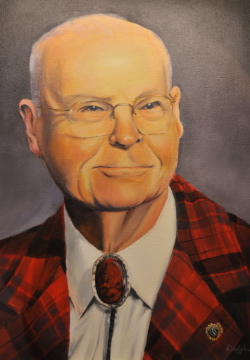X-Planes — Models illustrate the history of the experimental aircraft used by the U.S. Air Force, NACA (National Advisory Committee for Aeronautics, the precursor to NASA), and NASA to extend human knowledge of the principles of flight from the X-1 that broke the sound barrier to the X-45 hypersonic test plane.
The Space Race — This extensive exhibit uses artifacts, models, photographs and text to examine the Cold War's highest battlefield, the race to the Moon.
Follow the Water — Follow the scientific exploration of Mars and the search for water on the red planet.
Materials Technology — Explore the materials from natural minerals to man-made super composites that make up the air- and spacecraft that soar over our heads every day.
JAMES W. TURNBOW
Enshrined 2005
The father of aircraft crashworthiness analysis andinvestigation, Dr. James Turnbow began developing his specialty while serving in theordinance department of the United States Army during World War II. There he was charged with the task ofdeveloping ways to air drop larger loads of food, supplies, trucks, tanks, andequipment without destroying most or all of the payloads. He learned to counteract the crash forces bycreating cushioning solutions that could absorb the energy of a violentimpact. His engineering skills laterassisted in the development of some key aircraft components. This body of work is now known as the U.S.Governments’ five volume, Aircraft Crash Survival Guide and is the world’sprimary reference on this subject. Anaccomplished aviator in both gliders and general aviation aircraft, Doc was anactive member of the Civil Air Patrol.

